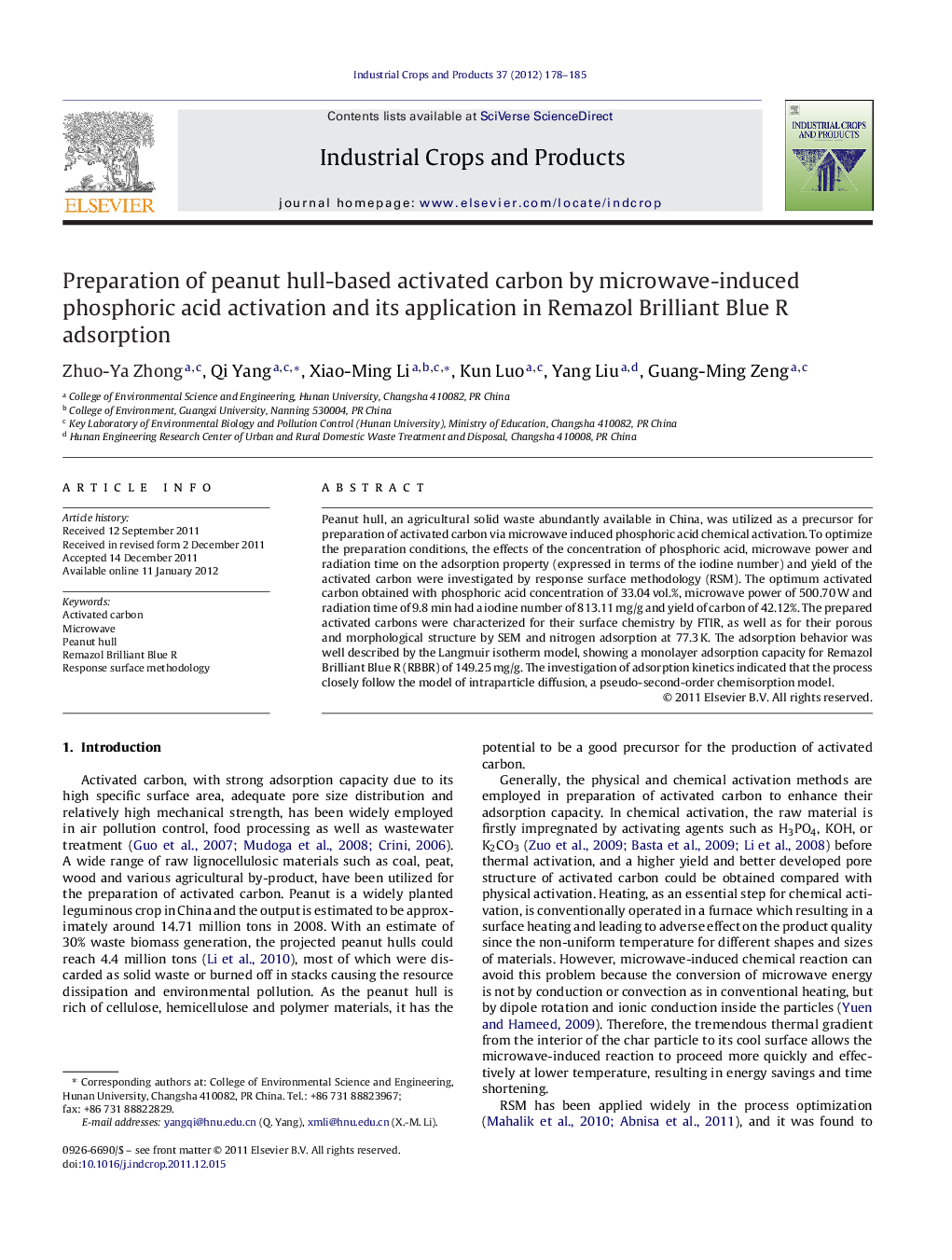| Article ID | Journal | Published Year | Pages | File Type |
|---|---|---|---|---|
| 4514214 | Industrial Crops and Products | 2012 | 8 Pages |
Peanut hull, an agricultural solid waste abundantly available in China, was utilized as a precursor for preparation of activated carbon via microwave induced phosphoric acid chemical activation. To optimize the preparation conditions, the effects of the concentration of phosphoric acid, microwave power and radiation time on the adsorption property (expressed in terms of the iodine number) and yield of the activated carbon were investigated by response surface methodology (RSM). The optimum activated carbon obtained with phosphoric acid concentration of 33.04 vol.%, microwave power of 500.70 W and radiation time of 9.8 min had a iodine number of 813.11 mg/g and yield of carbon of 42.12%. The prepared activated carbons were characterized for their surface chemistry by FTIR, as well as for their porous and morphological structure by SEM and nitrogen adsorption at 77.3 K. The adsorption behavior was well described by the Langmuir isotherm model, showing a monolayer adsorption capacity for Remazol Brilliant Blue R (RBBR) of 149.25 mg/g. The investigation of adsorption kinetics indicated that the process closely follow the model of intraparticle diffusion, a pseudo-second-order chemisorption model.
► Peanut hulls as activated carbon precursors. ► We use microwave-induced chemical activation for the preparation of carbon. ► The concentration of H3PO4 has a greater impact on iodine number. ► Radiation time plays an important role on the yield of carbon. ► Activated carbon can be effectively used as an adsorbent for the removal of RBBR.
